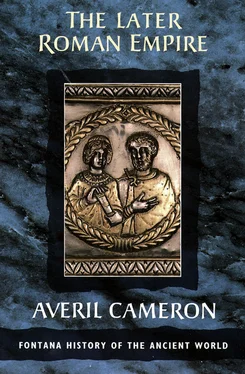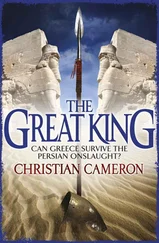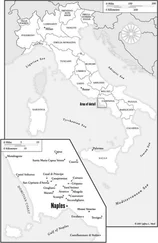1 ...6 7 8 10 11 12 ...16 Similar caveats apply to one of the most important sources of all – the Codex Theodosianus , a collection of imperial legislation from Constantine onwards, put together in Constantinople by a group of legal commissioners over the years AD 429 to 438 as part of a wider legislative project ordered by the Emperor Theodosius II, and a vital source for the history of the period. The constitutions are arranged thematically, according to subject, and in chronological order within the subject headings, and there are over two thousand five hundred in all. They begin in AD 311, and build on two earlier collections made under Diocletian, the Codex Gregorianus and the Codex Hermogenianus . Historians have to be very cautious when using the evidence of the Code. In the first place, it is not complete: the laws were dispersed and the commissioners had a difficult task in collecting them. Justinian’s later collection includes many constitutions not in the Theodosian Code. Further, though care was taken to preserve the original wording, many constitutions were shortened, and the commissioners were at the mercy both of their sources (not always good) and their own judgement.
More generally, many constitutions were simply repeated with variants by one emperor after another, so that it can be difficult to know how far they represent a response to a real situation and how much is simply taken over from previous precedent. The constant repetition of certain laws, especially those limiting freedom of movement for decurions (members of town councils) and coloni (agricultural tenants), did much to encourage the view of the fourth century as a repressive, or even a totalitarian regime, until it was pointed out that constant repetition usually indicates that the laws in question were in fact ineffective.
It is essential to realize that the Code consists of a set of prescriptions; it does not tell us what actually happened. Furthermore, other sources suggest that the process of legislation itself was far less straightforward than we might imagine. Constitutions passed in the name of a certain emperor are not necessarily to be associated with him personally; drafting responsibility lay with the quaestor sacri palatii , a post established under Constantine, whose job it was to deploy the elaborately rhetorical style which makes the Code such tortuous reading. Getting laws to the public was also a hit-or-miss affair. Though provincial governors had the task of making them public, ignorance of the law was common, as the constitutions themselves often reveal.
The administration and the bureaucracy in the later empire were highly complicated even in theory; in practice the system was full of loopholes and the rules, such as they were, were continually evaded, at times even with the open connivance of the authorities who should have been enforcing them. The mass of legislative material in the Code reveals both the ideal and the constant departures from it.
To this ample and often contradictory evidence can be added what we can glean from other non-literary sources, including the many surviving inscriptions, papyri and coins. Among the most important inscriptions are Diocletian’s Edict on Maximum Prices (AD 301), of which several versions are known, and his so-called Revaluation Edict . Like the laws in the Code, of which type this is an inscribed example, the Price Edict adopts a heightened moral tone, laying down terrible penalties for anyone who dared to put up prices beyond what was prescribed for each item:
Who is so insensitive and devoid of human feeling that he is unaware or has not perceived that immoderate prices are widespread in the commerce of the markets and the daily life of cities, and that uncontrolled lust for gain is not lessened by abundant supplies or fruitful years? … Since it is agreed that in the time of our ancestors, it was customary in passing laws to prescribe a penalty, since a situation beneficial to humanity is rarely accepted spontaneously, and since experience teaches that fear is the most effective guide and regulator for the performance of duty – it is our pleasure that anyone who violates the measures of this statute shall, for his daring, be subject to capital punishment.
Despite such rhetoric, and despite the many inscriptions and papyri which made the edict public, we know in this case that it was a dead letter within a very short time; the government simply lacked the necessary apparatus to put it into force. Many other inscriptions of the period are less dramatic – for instance the career inscriptions of the senatorial class, which increase in number with its re-establishment by Constantine, or the many inscriptions from cities of the Greek east, which now begin to use classicizing verse even for recording the careers of city officials. To these are added a new class: church dedications and Christian funerary inscriptions. As for coins, they are an important source for imperial titulature and imperial movements, especially during the tetrarchy and under Constantine. Many aspects of the late Roman bronze coinage remain obscure, but the gold solidus , introduced by Constantine, remained undebased and in use for many centuries.
No attempt is made at this point to describe or evaluate the archaeological and visual evidence for the period. This is partly because the range is so wide in each case that it would be impossible to summarize. But the other reason is that it is simply impossible now to write a history of this period without constantly referring to archaeological and visual evidence. Whereas Jones could base himself on an exhaustive knowledge of the literary and documentary sources, the subject has moved on dramatically in the last twenty-five years. Archaeologists have turned increasingly to this period, especially once a system had been evolved for dating late Roman pottery; general interest in urban history of all periods has focused attention on the wealth of material available from late Roman cities; and finally, as political and narrative history have lost their appeal, most historians have become much more conscious of the need to use material as well as literary evidence. As for visual art, two factors have brought about closer integration of this with the literary and documentary record; first, a growing willingness to take in Christian evidence, including Christian art, and second, the effects of a tendency in other periods of ancient history, perhaps deriving from modern comparisons, to place emphasis on the visual environment and the power of images as a means of communication. To sum up, the main writers are of course still the same, though they are in many cases viewed differently; by contrast, the scope of study has broadened out of all recognition.
III The New Empire: Diocletian
BETWEEN THE accession of Diocletian in AD 284 and the death of Constantine in AD 337, the disturbed situation which held in the mid-third century came under control and the empire passed through a phase of recovery, consolidation and major social and administrative change. In effect, the system of government which was to prevail in the east until the early seventh century, and in the west, though with less success, until the fall of the western empire in AD 476, was put into place. It is natural to attribute the achievement mainly to the two strong emperors who ruled during the fifty-three-year period, especially since this is also the tendency of the ancient sources; but it is necessary to remember that the actual process certainly involved less forward planning and more piecemeal development than hindsight would suggest. Caution is particularly necessary in view of the tendency of the sources to draw an over-sharp distinction between Diocletian and Constantine because of their religious differences, and to let that distinction carry over into the interpretation of their secular policies.
Читать дальше












